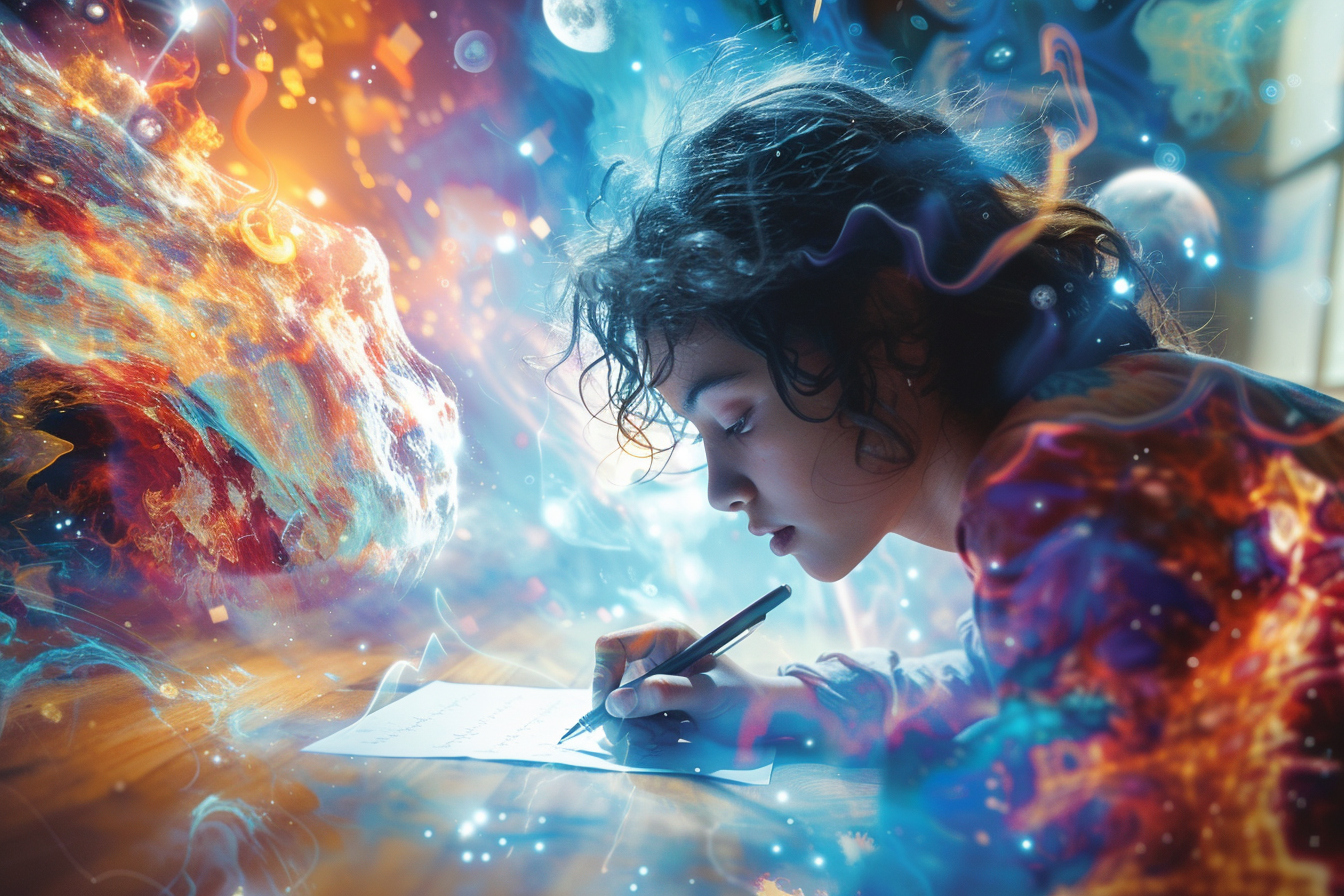Surrealist poetry represents a unique vehicle of expression, freeing words from the constraints of logic and daily rationalizations. It is an invitation to delve into the unconscious to draw from it unsuspected images and metaphors. For writers wishing to embrace this art form, here are techniques and tips that can guide you in the creative process of surrealist poetry writing.
Free your unconscious
Psychological automatism serves as a foundation for surrealist poetry. Popularized by André Breton and other figures of the surrealist movement, it consists of writing without prior censorship, letting thoughts flow onto the paper as freely as possible. This flow can generate new associations, opening the doors to boundless creativity. Engaging in regular automatic writing sessions can hone this sense of spontaneity and enrich your poetic practice.
Experiment with images
Surrealist images amaze with their ability to merge the real and the unreal, creating striking metaphors. Don’t hesitate to draw on your dreams or assemble disparate elements to form powerful poetic images. A sky sewn with silver threads, a watch melting in the sun… Surrealism shakes up usual perceptions and initiates a fascinating dialogue between the impossible and the plausible.
The misappropriation of objects
In surrealist poetry, everyday objects are often diverted from their initial function. An umbrella can become a boat, a chair can come to life. These transformations invite the reader to reconsider the ordinary from a new and mysterious angle. By practicing this diversion, you stimulate your inventiveness and discover hidden dimensions in the most banal things.
Word collages
Similar to the visual collages of Max Ernst or Hannah Höch, word collage consists of assembling heterogeneous textual fragments to create new poetic contexts. Sentences taken from different books or magazines can coexist in the same poem, thus generating surprising meanings. This process reveals the extent of language and narrative potential.
The meeting of opposites
The union of opposites is a recurring theme in surrealist poetry. Juxtapose hot and cold, dark and bright, soft and brutal. These confrontations produce a dynamic tension in your verses, a spark that captures the reader’s imagination and draws them into a universe where anything becomes possible.
Play with language
Language, in its very essence, carries immense creative potential. By playing with the sound of words, their arrangement on the page, or by inventing new terms, you can go beyond their original meaning. Alliteration, assonance, onomatopoeia and other figures of speech open up a wide field of sound and rhythmic experimentation to enrich your poetry.
Openness to other arts
Surrealist poetry draws on all forms of art. Painting, sculpture, music and cinema are all sources of inspiration which, once transcribed into poetic language, help to broaden your expressive palette. Visit museums, listen to various musical genres, watch masterpieces of the 7th art. Art, in its universality, is an inexhaustible reservoir of sensations and ideas for the surrealist poet.
The role of chance
Leave some room for chance in your creative process. For example, the exquisite corpse technique, where several people contribute to the same poem by adding words or phrases without knowing exactly what has been written before, opens up unforeseen perspectives. Use dice, cards, or any other random generator to choose words or themes. Chance can become an unexpected collaborator in the creative act.
Rewriting in a surrealist light
Surrealist art is not synonymous with the absence of work. The rough draft resulting from automation or any other technique may require revision. When rewriting, keep in mind the surrealist essence of the first impulses while seeking to improve its aesthetic or emotional coherence. Refinement and audacity can go hand in hand to give a successful form to the initial energy of your surrealist inspiration.
Constraints as a springboard
Voluntary constraints, far from restricting creativity, can encourage it. Imposing rules of form, sound or structure stimulates inventiveness by opening new ways to outwit and play with these limits. Try writing a poem where each line begins with the same letter, or a text where words can only be chosen from a given category. Constraints thus become a springboard towards renewed poetic horizons.
The role of the reader
Keep in mind that the surrealist poem establishes a special pact with its reader. Far from imposing a single interpretation, it opens a space of freedom where everyone can project their own dreams and reflections. Be generous in your images and associations, invite the reader to join your journey into the heart of the strange and extraordinary.
Exploring surrealist poetry is an exciting odyssey in a world where logical thinking is put on hold in favor of the unconscious. The methods and advice offered here are only starting points; the real journey begins when you let your imagination run wild. Writing is not an exact science, and in the art of the surrealists, it is the vagaries, errors and spontaneous discoveries that forge the beauty and singularity of the works. Enter the surreal game, and may the words guide you to unknown lands of poetry and creative freedom.












